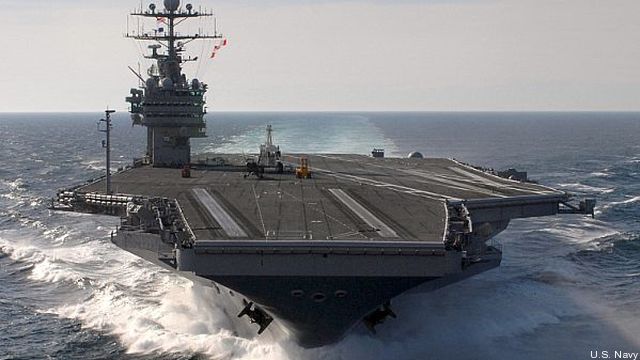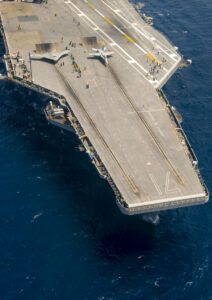
WASHINGTON: The Navy says it won’t have an aircraft carrier in the Middle East for a couple of months this fall. That news has caused a lot of anxiety — but we may be worried about the wrong thing. The real problem may not be the gap itself but the price the Navy pays to close it.
“If I were a betting man, I’d say that that gap won’t occur,” Vice Adm. Peter Daly, the retired former commander of the USS Nimitz strike group, said this morning. For this fall specifically, Daly’s betting that the Pentagon extends the deployment of the USS Theodore Roosevelt to close the gap. Planners may also speed up the deployment of Roosevelt‘s relief, the USSHarry Truman.

Extending deployments to cover gaps — at the expense of hard-pressed ships and crews — is what we’ve been doing for a decade, Daly told reporters after a Navy League panel this morning. “We have history here where we get right up to a gap,” he said, “and then we say, ‘Okay, we’re just going to go one more time’ … and then we really don’t catch up.”
What don’t we catch up on? Repairs and upgrades for the ships. Training and rest for the crews. Since 9/11, Daly told the audience this morning, the military been in “a permanent state of surge,” running both people and equipment harder while giving them less time to recover.
Even after 2013’s sequester cuts slashed operations funding, the military managed to keep its front-line deployed forces going, but at the expense of everyone else.
“There were gaps last year, there were gaps the year before, and the problem that we’re having was the bench strength,” Daly told the audience. “They’re not able to keep the guys on the bench up to snuff.”
Carriers are just one “iconic” example, Daly said. In years past, we had three carriers on patrol around the world at any given time and three more back in the US ready to deploy on short notice. Today we have two or three carriers forward, but only one ready to join them quickly in a crisis.
The problem is that when a ship gets back from a deployment that was longer than planned, it tends to need more maintenance than was planned for — but it has less time to do it, creating a vicious circle. Modernization of combat systems to keep pace with new threats also suffers, making vessels more vulnerable.

“There’s a point where the leadership has to say, we need to reset,” Daly told reporters. That’s the line in the sand that the Navy’s trying to draw by instituting a new “Optimized Fleet Response Plan” schedule and saying there’ll have to be a gap in the Mideast this fall. But it may prove a line drawn in water.
“In announcing this development ahead of time and so prominently,” one congressional staffer told me, “the Navy may be trying to condition the politicos that things have to change and that they cannot continue on the path of extending deployments. That announcement was certainly a change in pattern for the Navy. However, if ordered to [fill the gap] by the President and Secretary of Defense, the Navy will of course comply.”
So the question, the staffer concluded, is “will they get that order?”
Even with a shooting war in Syria and Iraq, Daly said, land-based aircraft could increase their efforts to make up for the absence of a carrier. But it took 54 days to get permission from local countries to launch offensive operations from their territory — 54 days when the carrier USS George H.W. Bush, which had been scheduled to come home, was the only source ofairstrikes. If another unexpected crisis erupts, like April’s Iranian arms convoy to Houthi rebels in Yemen, there may not be time to set up land-based forces, Daly said.
Between the carrier’s ability to respond at once and the political symbolism of its presence, said Daly, the pressure to close the gap is “almost irresistible.”
